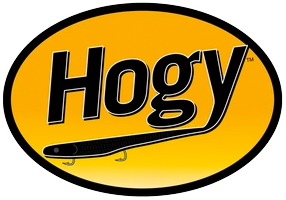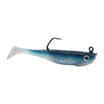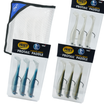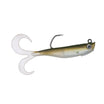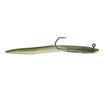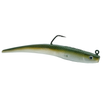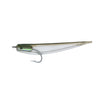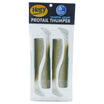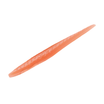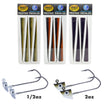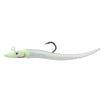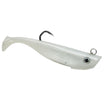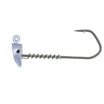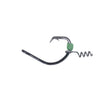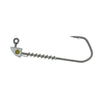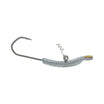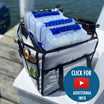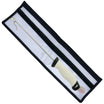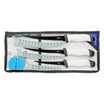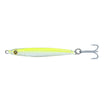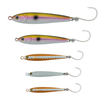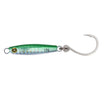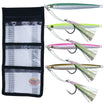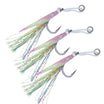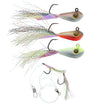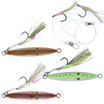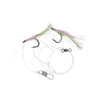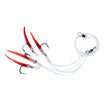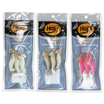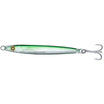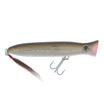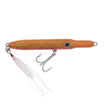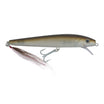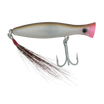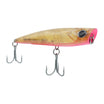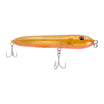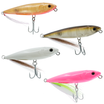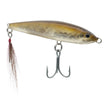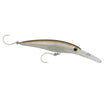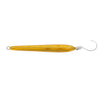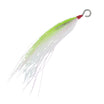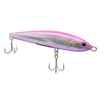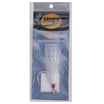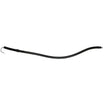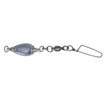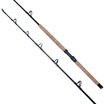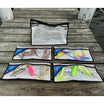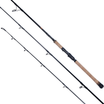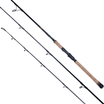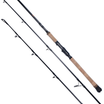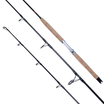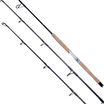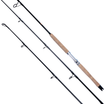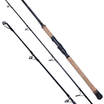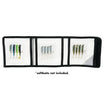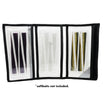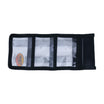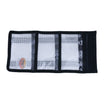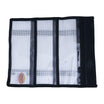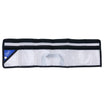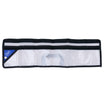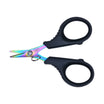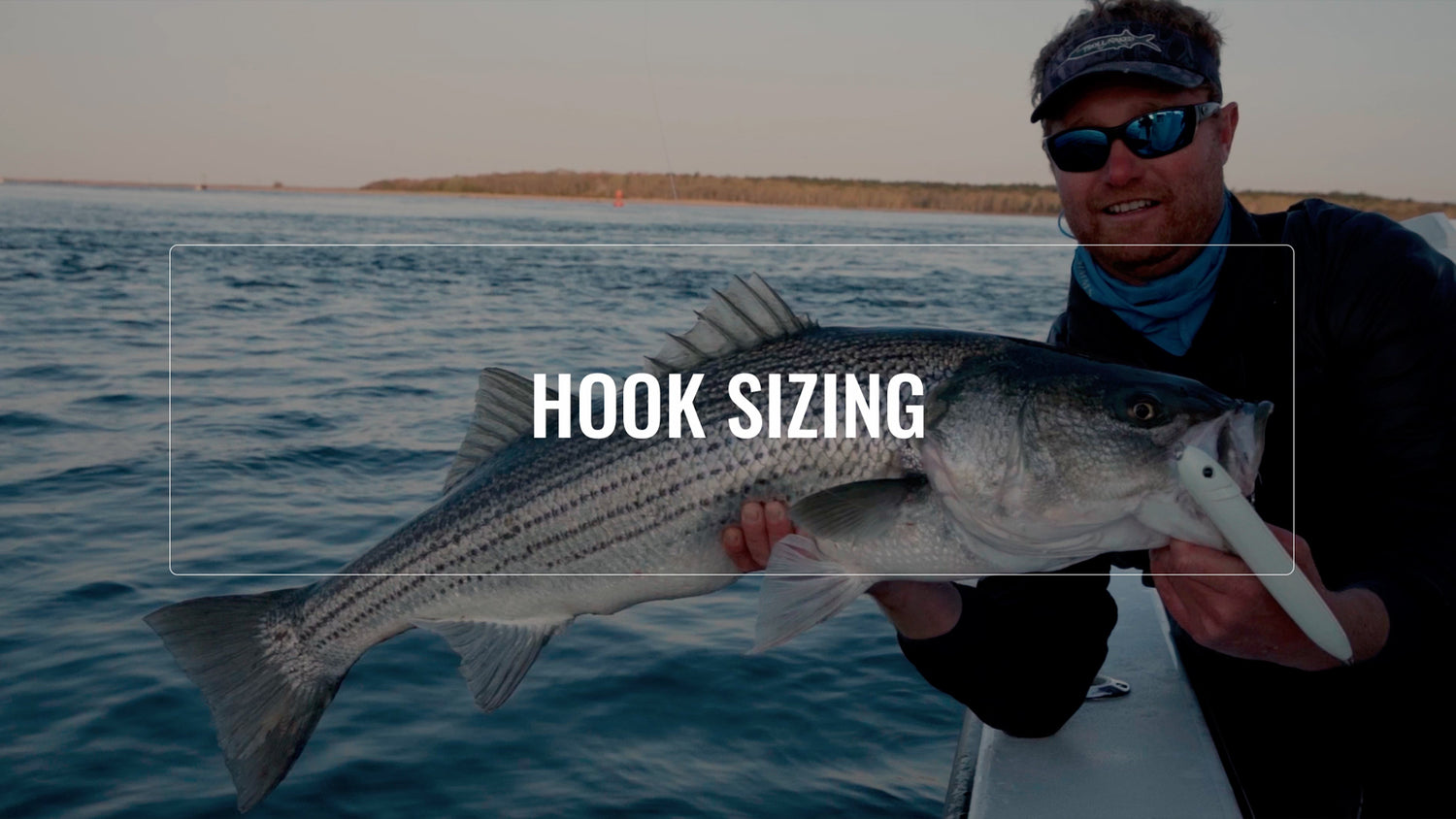Matching Hook Size to Target Species:
- Hook Size: Larger fish generally require larger hooks to ensure a secure hook set, while smaller fish need appropriately sized hooks to avoid injury and increase hook-up rates.
- Hook Gap: The size of the hook gap is crucial for effective hook penetration. Larger hooks with wider gaps can penetrate deeper and hold better, especially in larger fish.
- Strike and Hook-Set Efficiency: Larger hooks may require more force to set, which can be challenging with lighter tackle. Smaller hooks might set more easily but can be prone to bending or breaking under heavy strain.
Hook Goal: The goal is to find a hook that is big enough for the biggest fish you intend to catch but just small enough to land most of the mean average day to day fish. Ultimate the most important factor is hook gap as it is the “cradle” position (fish hanging on the bend of the hook) that will land the most fish with the fewest “hook spits”, bent or broken hooks.
Hook Sizing:
Hook sizing is always important but doubly important when fishing plugs with (single) hooks to achieve peak action and hookups.
Single J-Style Hook:
- Size: The hook should be just big enough to almost fit over the widest part of the lure.
- What If Too Big? You could have two problems with an oversized J-Style hook. 1. A J-hook that is too large such that it can easily fit over the body of the plug can get snagged on the lure which would interrupt the cast. 2. A hook that is too heavy or large will throw off the action with too much grad or weight in the wrong place.
- What if too small? A J-hook that is too small could line up with the lure if pushed up against the body thereby “canceling” possibility of a hook up. A hook that is “way too small” might throw off the action by not adding enough weight or drag to the lure, causing it to over swim and possibly “stall out.”
Single Treble Hook:
- Size: The circumference of the treble hook should be about two-thirds the circumference of the lure's widest point.
- What If Too Big? Unlike a J-Hook a “too large” treble will not fowl on the lure but could easily throw off action with too much drag or weight. A large treble also has an optics issue with “too much hook” showing that could spook fish.
- What if too small? A too small treble can be problematic in that the hook gap tends to be lees on a treble, with three lesser gapped hook point vs one larger hook gap. You could miss large fish because the hook gap is not enough to fully pierce the a big fishes’ lip.
Hook Gap:
The hook gap is the distance between the hook point and the shank of the hook. It is a critical measurement that affects the hook's ability to penetrate and hold onto a fish. A larger gap can improve hook-up ratios by providing more space for the hook to catch and cradle in the larger fish's mouth, while a smaller gap might be less effective for larger fish but can be advantageous in ensuring an unencumbered hook up with smaller fish. The appropriate hook gap varies depending on the type of fishing, target species, and specific fishing conditions.
Wide Gap Pros:
- Wider gaps better for holding larger fish on the hook in a cradle
- Wider gap hooks reduce by-catch of smaller fish.
- Increases hook up of larger fish
Wide Gap Cons:
- An extra wide gap on a hook can incorporate extra drag, impeding the lure’s action.
- Wide gap hooks, especially those with a heavier gauge, can add too much weight to a plug, changing its balance and action.
- Wide gap, thin wire hooks are not as strong as shorter gap hooks with the same wire gauge if the fish is not properly cradled due to extra leverage imparted with the longer hook point.
Hook Gauge:
- Match to Tackle: Ensure the hook wire gauge matches the strength of your tackle. Heavier gear pairs well with thicker wire hooks, while lighter gear is better suited to thinner wire hooks.
- Species-Specific Needs: Different species require different hook gauges. For example, bass fishing often involves heavier cover, necessitating thicker wire hooks, whereas trout fishing might benefit from thinner wire for delicate presentations.
- Thicker Wire Gauge:
- Increased Strength:Thicker wire hooks are more robust and can withstand greater force without bending or breaking, making them ideal for larger, stronger fish. Less likely to bend or break during the fight, leading to fewer lost fish and reducing handling time use on heavier gear, which can be beneficial for catch-and-release practices.
- Increased Weight: Hooks with a heavier wire gauge weigh substantially more, sometime 2 or 3 times the weight of a thinker hook. The increase weight must be understood relative to how the lure is designed and weighted so that you ensure proper swimming action. Can add weight to the lure, potentially altering its intended action. This can be beneficial or detrimental depending on the desired presentation.
- Hook Penetration: Heavier wire gauge hooks require more force to penetrate a fish’s mouth. A stronger hook set must be imparted. May require more force to penetrate the fish's mouth, which can be a drawback when using lighter tackle or targeting fish with tougher mouths.
- Holding Power: Once set, thicker wire hooks can hold fish securely due to their strength.
- Thinner Wire Gauge:
- Lighter Weight: Thinner wire hooks are lighter, enhancing the action of smaller and lighter lures. Maintains the natural action of lighter lures, ensuring they perform as designed.
- Easier Penetration: Require less force to set, making them effective for light-biting fish or when using lighter gear. Easier penetration but the increased risk of hook failure must be managed carefully
- Bending Risk: More prone to bending or straightening under heavy load, which can lead to lost fish if not chosen carefully.
- Subtle Presentation: Ideal for finesse techniques where a more delicate presentation is required to attract wary fish.
Hogy Goldilocks Hook Philosophy:
We follow the age-old hook advice above and choose premium hooks from the best hook makers around the world, often VMC. We design, rig and balance our lures based on inshore, universal (medium heavy duty inshore, medium heavy offshore) and offshore designated fishing classes and rig with the appropriate hooks that will work in 95% (or more) of intended applications for all species around the world.
